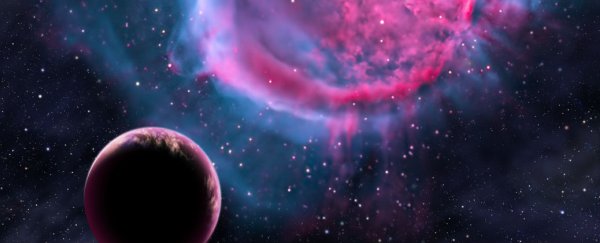Eight new planets have been discovered, astronomers have announced today, and they all fit within the so-called 'Goldilocks zone' of their stars. This means these planets orbit at a distance to their stars that liquid water could reasonably persist on their surface, which is a crucial prerequisite for life as we know it. And two of these planets are more like Earth than any other planet discovered so far.
"Most of these planets have a good chance of being rocky, like Earth," lead author and astronomer Guillermo Torres from the Harvard-Smithsonian Centre for Astrophysics (CfA) in the US said in a press release.
Discussing their find at today's meeting of the American Astronomical Society, Torres and his team name Kepler-438b and Kepler-442b as the most Earth-like planets found to date. Both of these planets orbit red dwarf stars, each smaller and cooler than our own Sun. They were located as part of NASA's Kepler mission.
Kepler-438b is slightly larger than Earth, with a diameter about 12 percent larger than our planet's, and it orbits its red draft star every 35 days. The team says there's about a 70 percent chance that it's rocky.
Kepler-442b, on the other hand, has a much slower journey, circling its star every 112 days. It's about one-third larger than Earth, and is believed to have a 60 percent chance of being rocky.
Both planets are far enough away from their star that if they had liquid water on their surfaces, it wouldn't dry up or boil away, but they're not so far away that this water would freeze solid. "For our calculations, we chose to adopt the broadest possible limits that can plausibly lead to suitable conditions for life," Torres said in the press release.
The team uses the amount of light they think these planets are getting from their stars to predict how likely they are to be in the Goldilocks zone. In other words, how much light a planet appears to get can be used to measure the distance between it and its star, but because these planets are so far away and we can only see them indirectly through different measurements, we can only speculate with degrees of probability that this is actually the case.
To give you an idea of how far away we're talking, Kepler-438b is 470 light-years from Earth and Kepler-442b is 1,100 light-years away. One light-year is about 9.5 trillion kilometres. it's amazing we can even detect these planets, let alone figure out the probability that they might be rocky and mild on the surface.
So we know that Kepler-438b receives about 40 percent more light than Earth, which has allowed the team to calculate it has a 70 percent likelihood of being in the habitable zone of its star. Kepler-442b gets about two-thirds as much light as Earth, so the team gives it a very nice 97 percent chance of being in the habitable Goldilocks zone.
"We don't know for sure whether any of the planets in our sample are truly habitable," one of the team, astronomer David Kipping, said in the press release. "All we can say is that they're promising candidates."
These two new planets have knocked Kepler-186f and Kepler-62f off the top of the Earth-like planet ladder.
